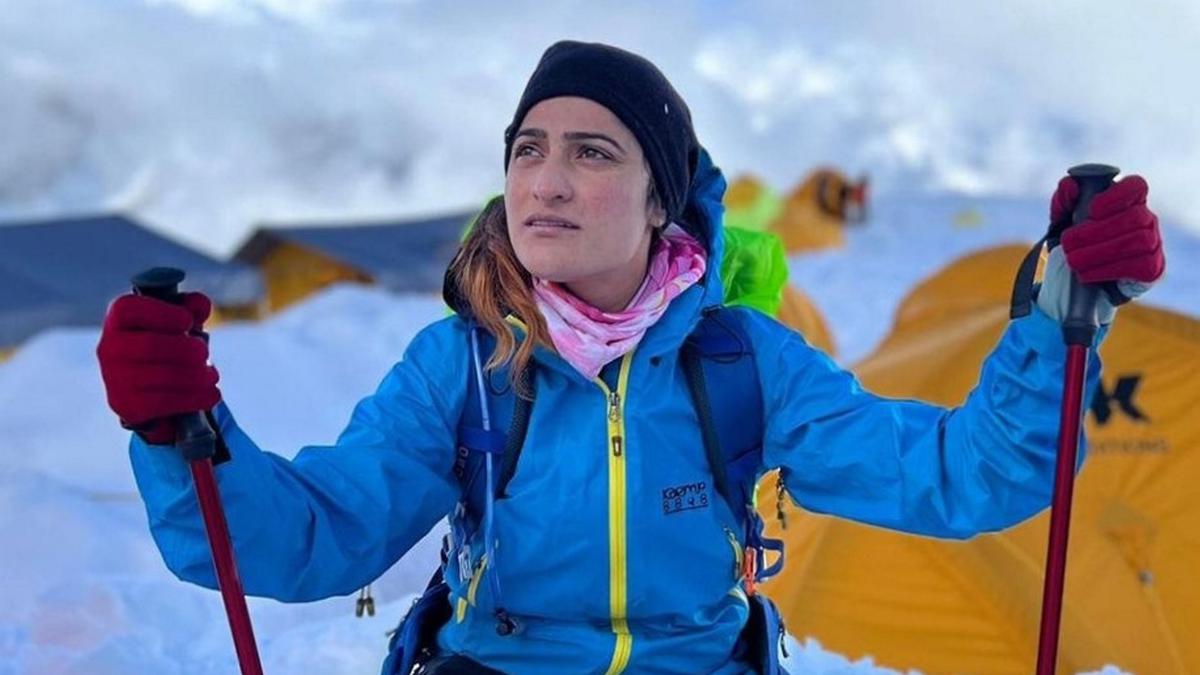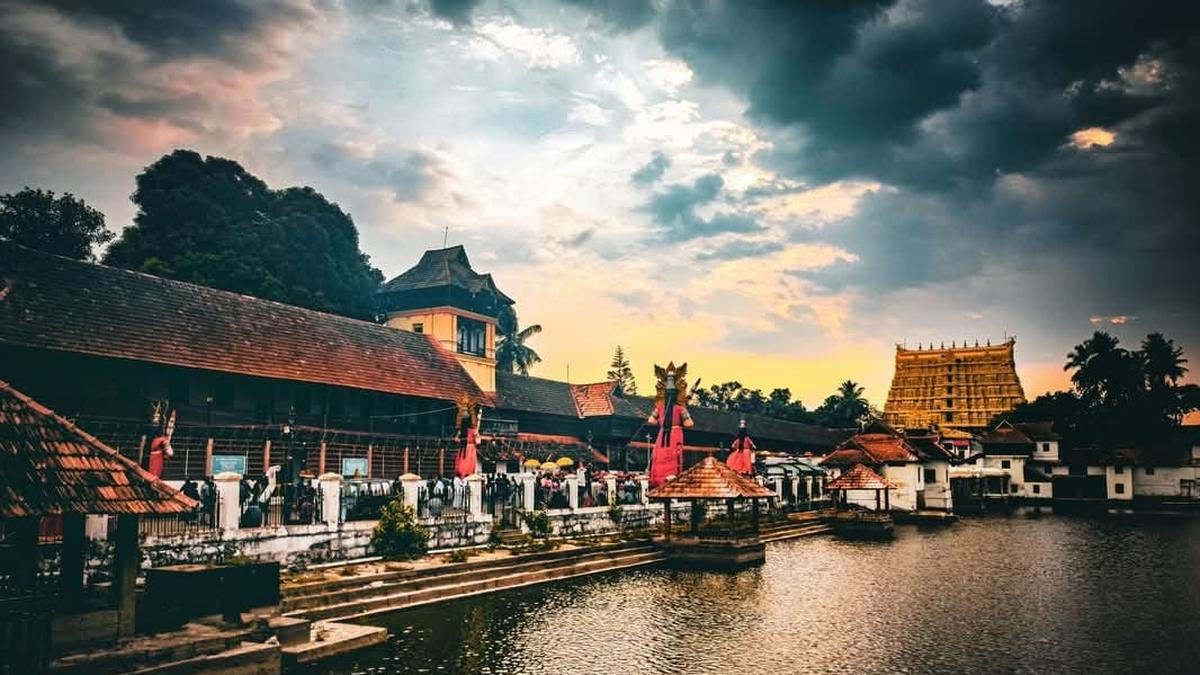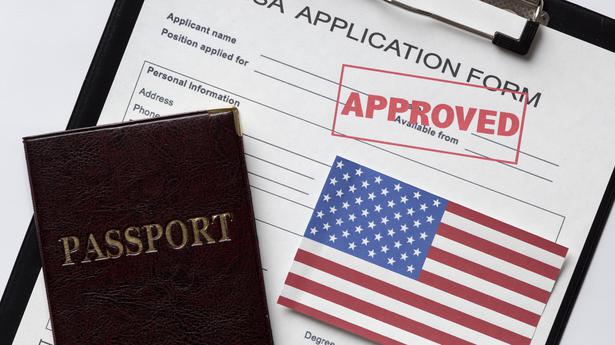Award-winning mountaineer Baljeet Kaur, who became the first and only Indian to climb five 8,000-metre peaks in a single season in March 2021, went missing on April 18 during one of the most dangerous treks in the world – the summit of Annapurna I. Her chances of survival were so bleak that the news of her death had gone viral.
Just hours later, though: she was found alive. It was a miracle, for no one expected her to survive a night without oxygen support at nearly 7,000 metres above sea level and in -40°C.
In an interview over phone from Nepal, the 27-year-old woman from Solan, Himachal Pradesh, recalls fighting hallucinations and having faith to stay alive. Ms. Kaur’s close shave with death is a sobering reminder of the risks and dangers associated with high-altitude mountaineering.
For the trek, in which she wanted to climb the 8,096-metre-high Annapurna peak without oxygen support, Ms. Kaur had enrolled with Nepal-based mountaineering company Pioneer Adventure on March 26. She was given an experienced Sherpa (mountain guides who are known by their ethnicity) and a rookie porter. The trio reached Camp IV of Annapurna I on April 15. The plan was to leave at 2 p.m. the next day, but the experienced Sherpa left in the morning, saying he would join them in some time and they should march ahead. “We began the climb as planned,” she says.
Usually, it takes 16-17 hours to reach the summit, depending on an individual’s capacity. But, Ms. Kaur and the porter trudged in the hope of the Sherpa coming back. Soon, it was nightfall. At 3 a.m. on April 17, a Sherpa descending the summit met Ms. Kaur and told her he had been sent by her guide. “He was heading to Camp IV, but now he was to climb up again. A back-to-back summit climb is extremely tiring. I was worried,” she says.
Ms. Kaur decided to go on as she did not want to expend her energy on a confrontation and had the assurance of the two men being on oxygen support. She wanted to summit by afternoon.
That wasn’t to be.
When all went downhill
When the trio reached the summit sometime between 6 p.m. and 6.30 p.m., AMS, or acute mountain sickness, had started to kick in. “Some time before we reached the top, I wanted to cancel the climb as the other two were showing signs of AMS, but they insisted we continue as we had come far. I was also breathless because I did not have oxygen support,” she says.
On reaching the top, Ms. Kaur had her first hallucination, a symptom of AMS. “I saw a woman congratulating me for the climb and asking me for money in return for Nepal’s flag. I decided to descend quickly,” she says. “I think I must have covered some 200 metres when I saw the Sherpa and the porter fighting. They then turned to me and asked me to walk fast.”
With AMS causing fatigue and mental impairment, Ms. Kaur traipsed. At around 8 p.m., she had another hallucination. “I saw four people in a tent and they were asking me to stay and have food,” she says.
Tired of asking her to be quick, the Sherpa paced down the mountain and the porter asked her if he could leave too. “I didn’t know what to say, so I asked him to go. I ambled down, gathering my thoughts. I was hallucinating, hearing people talk in Punjabi. My eyes were heavy and I was trying to keep them open. So, I slapped myself,” she recollects.
Ms. Kaur continued to struggle, resting and walking down the mountain. She remembers looking around and seeing snow-capped peaks shimmering against a dark-grey, star-lit sky. She felt a storm pass almost every half hour. “I felt someone had covered me from behind, as I couldn’t feel the cold wind, even though I could hear it howling.”
She remembers standing up from the snow at one point of time and seeing light coming from below. “It was Camp IV. I started trekking down after changing my safety anchor. I wasn’t leaving the rope that was attached to my harness, but a voice in my head kept telling me to unclasp it. I couldn’t think straight; with every step I took, my mind kept telling me I am going uphill,” she says.
The hallucinations got stronger and more frequent. “I could hear Punjabi and south Indian songs. I talked to myself to deafen the sound of my thoughts. Every 15-20 minutes, my mind would imagine something and I’d regain consciousness for five minutes. My life depended on decisions I took in that time frame,” she says. “I remember falling down, some 20 metres, and hanging by my safety harness. My mind kept telling me to detach myself from the rope and fly.”
Prateek Gupta, founder and CEO of Adventure Sports Cover 360, who initiated the rescue of four mountaineers, including Baljeet Kaur, from Annapurna.
| Photo Credit:
Special Arrangement
The rescue
The night slowly faded into the light of day. Ms. Kaur pulled herself up and sat on the edge of a cliff. “Around 7.56 a.m., I reached out for my phone to listen to the Gurbani (Sikh prayer). The first thing I saw was the Garmin Earthmate app, which prompted me to send an SOS, ‘Rescue Needed’, to my agency. An hour later, I received a reply: ‘Baljeet, are you okay?’ I was told a helicopter had been sent, but it could not land,” she says.
Help arrived by 1 p.m.
“I could barely keep my eyes open when I heard the helicopter and saw it fly past me,” she says. Ms. Kaur was prepared to dig a hole and hide in case the weather worsened. “But just then the copter positioned itself right above my head and threw a rope down. I unclasped my harness and attached myself to the hook of the rope.”
Within 10 minutes, she was flown to the base camp.
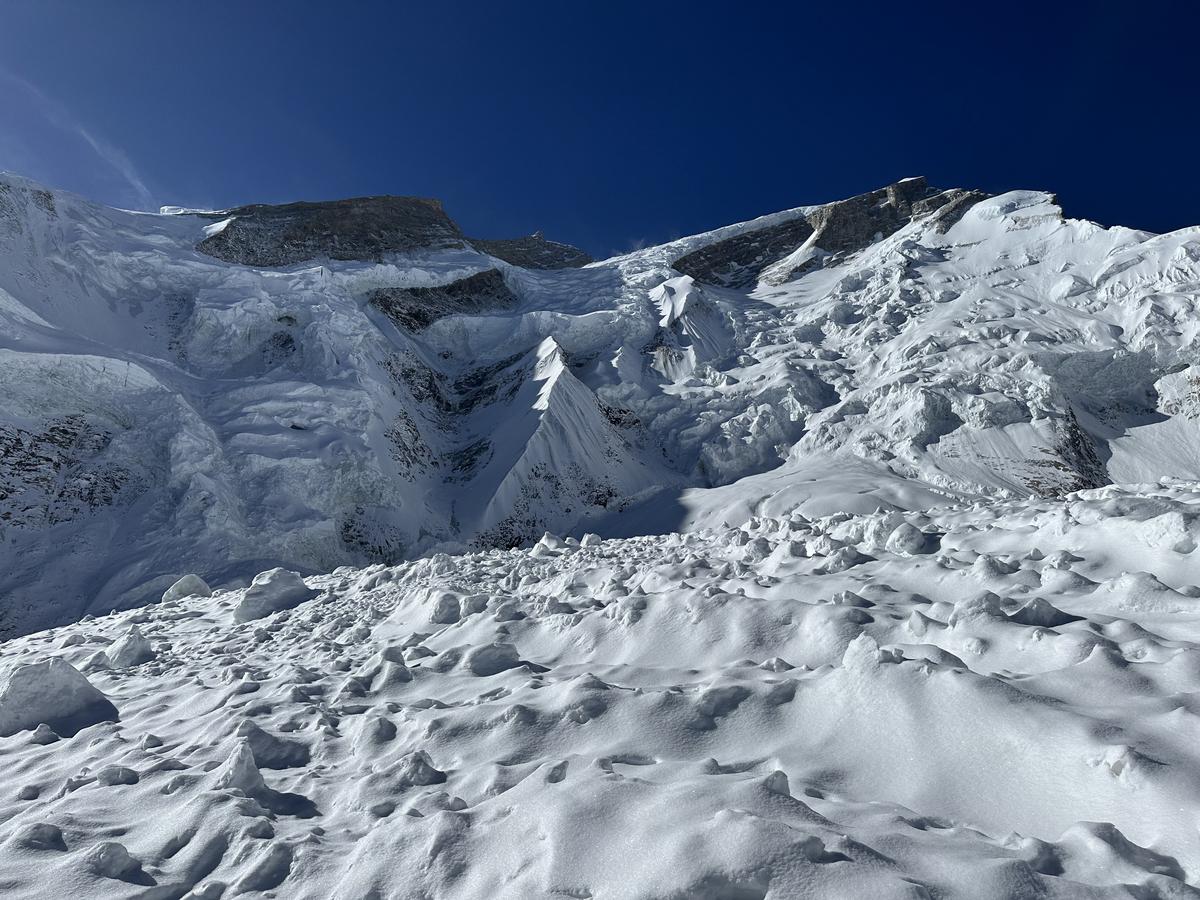
The crevasse that Anurag Maloo fell into near Camp II.
| Photo Credit:
Special Arrangement
Between April 16 and 20, Prateek Gupta, founder and CEO of Adventure Sports Cover 360, initiated the rescue of four mountaineers from Annapurna. “We rescued Jill, Anurag Maloo, Baljeet and Arjun Vajpai,” he says.
On April 17, around 3.15 p.m., Mr. Gupta received a call from Mr. Maloo’s operator to enquire about his insurance cover and if a rescue was possible. “Anurag had fallen into a crevasse near Camp II. There’s an avalanche in that area every half hour. We sent a chopper for aerial search, but couldn’t find him,” he says.
Also Read | Mountaineer Anurag Maloo’s condition improving, but still critical
The next day, when Mr. Gupta was gearing up for another aerial search to spot Mr. Maloo, he received an SOS from Mr. Vajpai and the news of Ms. Kaur’s death. “We sent one helicopter for Anurag. Two more were routed from Khumbhu when at 8 a.m., I was told Baljeet was alive but missing,” he says.
Mr. Gupta, who helmed an insurance company for adventure sports for five years, says one of the biggest challenges of such rescues is that it’s risky for choppers to land above 6,000 metres. “Air is thin and winds are strong. Also, every minute costs $300,” he says.
Usually, a rescue guide is sent with the pilot to rescue climbers, but in Ms. Kaur’s case, this wasn’t an option. “We didn’t get any volunteers for Anurag for two days. No Sherpa agreed to enter the crevasse or search that area on foot, so we kept looking for him aerially. Baljeet, too, was at 7,500 metres. We could not land the copter,” he says.
Ms. Kaur attaching the rope thrown down to her and locking it to her harness was “miraculous”, he says. “Usually, a climber is incapacitated after spending a night in -40°C and has suffered Grade IV frostbites,” Mr. Gupta says.
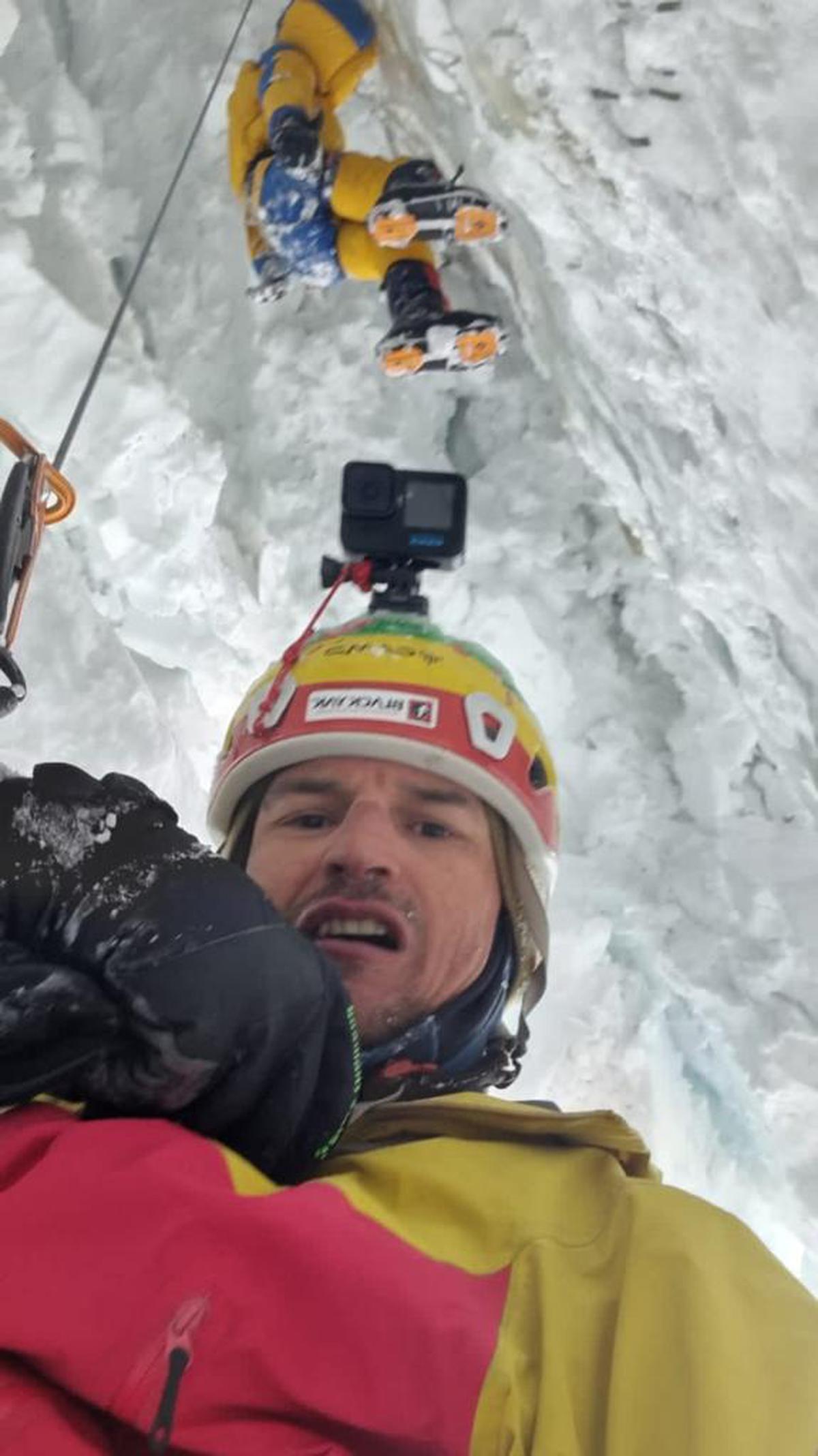
Adam, a Polish guide, who was involved in rescuing mountaineer Anurag Maloo.
| Photo Credit:
Special Arrangement
For rescuing Mr. Maloo, Mr. Gupta was able to send a team of five Sherpas and two foreign volunteers on April 20. Polish rescue guide Adam descended the crevasse and saw Mr. Maloo’s pupils dilate. “It took six hours to get him out of there,” says Mr. Gupta.
Aerial rescues are risky, he adds. “The rope is attached to the harness and the climber is lifted from the waist. There are chances of spinal injury, but Baljeet was lucky,” he says.
Ms. Kaur was stranded for nearly 18 hours right below one of the deadliest peaks of the world and for 48 hours above 7,000 metres. She was then treated at Kathmandu’s CIWEC Hospital for five days. The doctors, she says, are surprised to see she suffered only chilblains (swellings) and has difficulty in breathing. “I have always trusted the mountains and respected them. I save them by keeping them clean, so they look out for me. But, in this case, I think I survived because I was self-motivated. That’s my mantra,” she says.


